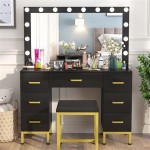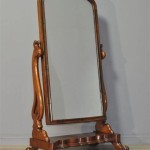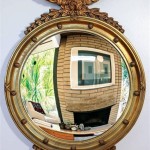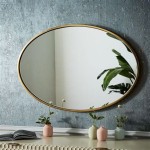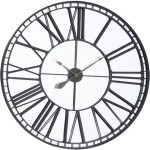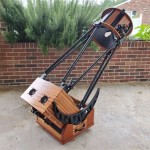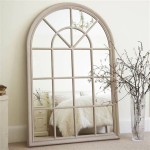How Can You Tell If A Mirror Is Two-Way?
The idea of two-way mirrors, often depicted in crime dramas and spy thrillers, can be unsettling. Knowing how to differentiate a standard mirror from a two-way mirror can provide peace of mind in various situations. While the term "two-way mirror" is common, it's more accurate to refer to them as partially reflective surfaces. These surfaces reflect some light while allowing some light to pass through. This article outlines several methods to determine if a mirror is partially reflective.
The Fingernail Test: One commonly cited method involves observing the gap between one's fingernail and its reflection. Placing a fingernail against the reflective surface and observing the gap can offer a clue. With a standard, first-surface mirror, there should be virtually no discernible gap between the nail and its reflection. This is because the reflective coating sits on the top surface of the glass. With a partially reflective surface, a noticeable gap will appear. This is because the reflective coating is located on the back surface of the glass, creating a small distance between the fingernail and its reflection. However, this method is not foolproof and can be misleading depending on the thickness of the glass and the quality of the reflective coating. It’s important to use additional verification methods.
The Light Level Test: A significant difference between a regular mirror and a partially reflective surface lies in the amount of light they transmit. This difference provides another method for identification. Partially reflective surfaces function by allowing some light to pass through. Therefore, if one side of the mirror is significantly brighter than the other, it suggests the possibility of a partially reflective surface. Try turning off the lights on the side you are on. If you can now see through the glass, it is likely partially reflective. This method is more effective than the fingernail test but still requires further confirmation.
The Observation Test: This test involves observing the environment behind the suspected two-way mirror. This method is particularly useful if there’s a noticeable difference in light levels between the two sides of the mirror. If the lighting on the suspected observation side is brighter, it might be possible to see through the mirror by shielding light from the reflective side. Cupping your hands around your eyes and pressing your face close to the glass can help block out the reflected light and enhance any light transmitting through from the other side. This method, combined with the light level test, offers stronger evidence of a partially reflective surface.
The Sound Test: Sound can behave differently when encountering a regular mirror compared to a partially reflective surface. Tapping on a standard mirror will typically produce a dull thud. The sound is somewhat absorbed by the backing typically found on standard mirrors which helps to prevent distortion and ghosting of the reflection. Tapping on a partially reflective surface, however, might produce a more hollow, brighter, or reverberating sound due to the absence of a backing and the potential for a cavity behind the glass. This difference in sound can provide a further clue but should not be considered definitive on its own.
Seeking Professional Confirmation: While the methods outlined above can provide some indication of a partially reflective surface, they are not entirely conclusive. For definitive confirmation, it’s recommended to consult with a professional glazier or security expert. They possess the expertise and specialized equipment to accurately determine the properties of the glass and the nature of its reflective coating. This is the most reliable method for verifying suspicions.
Understanding the Limitations: It's essential to understand that even with these methods, conclusively identifying a partially reflective surface without specialized equipment can be challenging. The thickness and type of glass, the quality of the reflective coating, and the lighting conditions can all significantly influence the results of these tests. Therefore, a combination of these tests, and ideally consultation with a professional, is the most prudent approach when attempting to determine the true nature of a reflective surface.
The Importance of Caution: If there is concern regarding potential surveillance, it is crucial to prioritize caution. Avoid discussing sensitive information near the suspected partially reflective surface and report any concerns to the appropriate authorities. Taking these precautions can help safeguard privacy and security.
Considering the Context: The location and context of the mirror also provide important clues. Partially reflective surfaces are more likely to be found in specific environments such as law enforcement interrogation rooms, security observation areas, and certain retail environments for loss prevention. Considering the context can contribute to a more informed assessment and potentially avoid unnecessary alarm where a standard mirror is used for its intended purpose.
Reflecting on the Findings: By combining the results of the described methods and considering the overall context, one can gain a more informed understanding of the nature of the reflective surface. While these methods offer valuable clues, professional consultation remains the most reliable approach for definitive identification. Prioritizing caution and awareness is essential when dealing with potential privacy concerns related to partially reflective surfaces.

Mirror Or Two Way Glass Here S How To Tell The Difference Test Safety

How To Tell If A Mirror Is Two Way Or Not 8 Steps With Pictures Hotel Mirrors Double Sided

How To Tell If A Mirror Is Two Way Or Not Quora

How To Tell If A Mirror Is Two Way Or Not 8 Steps With Pictures

How To Tell If A Mirror Is Two Way Or Not 8 Steps With Pictures
How To Tell If A Mirror Is Two Way Or Not Quora

Tips For Identifying Whether Your Mirror Is Two Way Or Not Ledmyplace

How To Detect A Two Way Mirror Fingernail Test

How To Tell If A Mirror Is Two Way Or Not 8 Steps With Pictures

How To Tell If A Mirror Is Two Way Or Not 8 Steps With Pictures

